Many chimney fires are preventable despite the National Fire Protection Association statistics showing 25,000+ chimney fires occur annually. And as a homeowner, property manager, or renter, you do not want your home to be the next statistic. Thus, you need to learn how to clean a dirty chimney.
Here’s why. Excessive long-term exposure to the combustion byproducts such as creosote and soot has been associated with cancer, as the Centers for Disease Control and Prevention says. Furthermore, a neglected chimney leads to blockages, hindering smoke’s smooth escape. This means you are exposed to unclean air, which finds its way back into your house.
All these underpin why having basic knowledge and skills in cleaning your dirty chimney is essential. This guide will show why we recommend cleaning your chimney regularly, the necessary tools, and the steps involved.
The Importance of Regularly Cleaning Your Chimney
Your home is your sanctuary, and you should strive to keep it that way. One way of achieving this is by regularly cleaning your chimney. Moreover, a well-maintained chimney offers additional benefits, such as
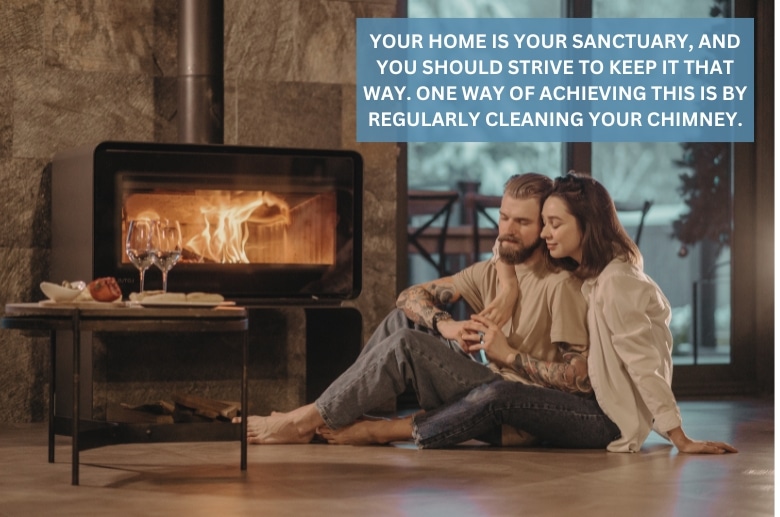
- Promoting a safe environment. A dirty chimney poses a fire risk to your home and your family’s safety due to creosote, a byproduct of burning wood. Creosote builds up over time in your chimney and can easily ignite, leading to a fire that can spread throughout the entire house.
- Enhancing better health. Consistent use of the fireplace results in soot and creosote buildup, which, if neglected, can block the chimney. This blockage leads to smoke backflow, potentially leading to respiratory issues if inhaled for an extended period. It’s essential to understand the health risks of dirty chimneys to protect yourself and your loved ones.
- Extending the life of the chimney. Like any product, your chimney experiences wear and tear. However, regular cleaning can extend its life, providing value for money by minimizing more expensive repairs.
- Ensuring better efficiency. Regularly cleaning your chimney increases its efficiency, allowing it to function optimally and free from soot and creosote obstructions that accumulate over time.
——
Do You Need to Hire Chimney & Fireplace Expert?
Get free quotes from qualified experts near you. No commitment required!
——
How to Clean a Dirty Chimney in 5 Simple Steps
If you are an enthusiast DIYer looking for how to clean a dirty chimney, these five steps are a must-follow. They are designed to keep you safe, ease the cleaning process, and help you achieve excellent results.
But before the steps, you must follow the following safety precautions.
Safety Precautions Before Cleaning a Chimney
Even though cleaning a dirty chimney is one of the most satisfying DIY tasks at home, it’s equally dangerous if done wrongly. You can inhale the soot and other particles, or they can enter your eyes, inhibiting your vision.
Moreover, a ladder can slip, putting you in grave danger of falling. So, what should you do to enhance your safety in this home task? Here are some safety tips to follow.
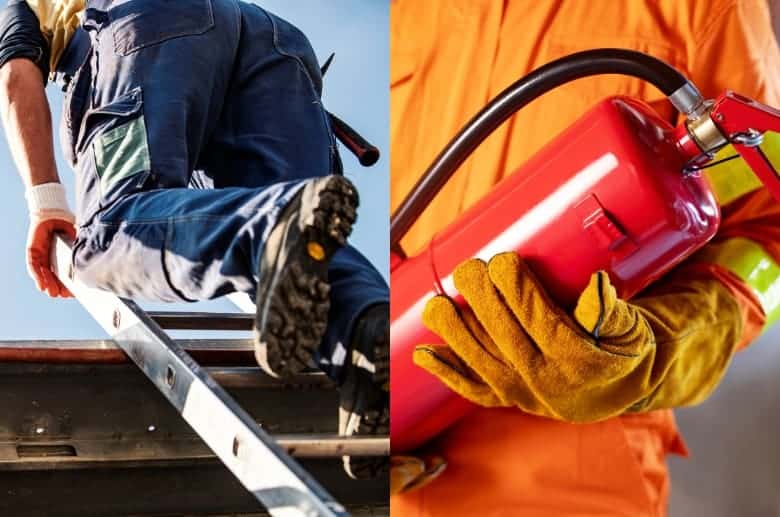
- Wear protective gear. Always have safety glasses and a face mask on—additionally, wear gloves, boots, and a head covering.
- Use a sturdy ladder when climbing to the rooftop. If possible, have someone hold the ladder for you to ensure stability.
- Always have a fire extinguisher within reach in case a fire ignites.
Tools & Materials Required
To clean your chimney, you will need a few essential tools, such as:
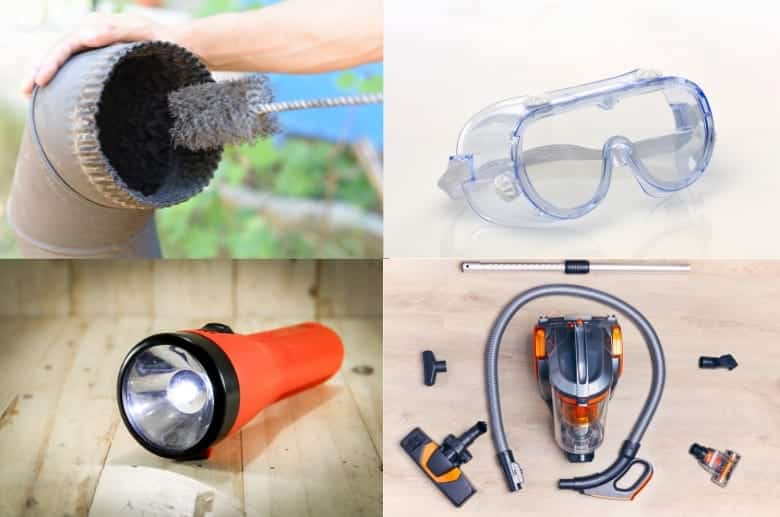
- Chimney cleaning brush. You will need this to scrub off the dirt (soot and creosote) attached to the chimney wall
- Drop cloth. This is spread on the chimney front and collects all the scrubbed dirt.
- Goggles. You need safety goggles over your eyes for protection. Otherwise, particles may enter your eyes.
- Dust mask. You need a dust mask to prevent inhaling the small combustion debris in the chimney.
- Flashlight. A flashlight will ease your visibility while cleaning because a chimney is dark, yet you must see every section to ensure you do a thorough job.
- Ladder. You need a sturdy ladder to help you ascend the rooftop. Ensure you have someone holding it for enhanced safety.
- Vacuum cleaner. Chimney cleaning is messy, and a vacuum cleaner is essential to rid your home of any leftover particles.
Prep the Work Area
A DIY chimney cleaning needs proper preparations. This is because, as much as it is beneficial, mistakes can occur, leading to damage and injuries. To prepare your work area effectively, consider the following steps:
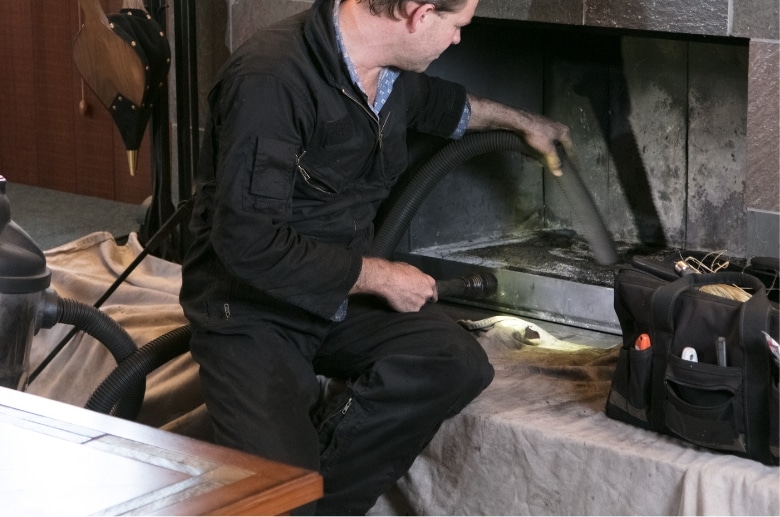
- Protect the surrounding areas. Ensure you cover nearby furniture and floor with appropriate material like poly sheeting. This prevents flying dust and particles from settling on furniture, making cleaning them more hectic and expensive. Cover the fireplace by placing a drop cloth to collect gunk.
- Clean and remove any debris around the fireplace (like ashes or soot) with a damp rag or brush, easing the cleaning process.
- Switch off the heating or cooling system. Creosote is highly flammable, and a single spark or excess heat is enough to ignite a fire.
Step 1. Inspect the Chimney and Flue
After preparing the work area, inspect the chimney and flue to determine whether you can do it alone or need a professional. Look for cracks or gaps in the chimney and the soot buildup size.
If the soot seems deep, tar-like, and shiny, there is heavy creosote, and it’s advisable to have a certified chimney sweep clean it. But if the soot is only a few inches deep, you can clean the chimney yourself. Use a flashlight to help you see inside the chimney, and check the flue to ensure it’s open and unobstructed.
It’s also important to open the damper to ensure it moves freely and check for corrosion or rust. If the damper is stuck, you can use a lubricant like WD-40 or vegetable oil to loosen it up.
With the check complete, move on to the next step.
Step 2. Sweep the Chimney from Top to Bottom
The next step is to sweep the chimney from top to bottom. Use a brush or broom attached to a rod, and move it up and down on the chimney’s wall. Use a flashlight to check your efficiency before moving to the next wall.
Continue this process until you’ve gone around your chimney and the rod can no longer extend down. This means you have reached the smoke chamber, and it is time to clean from the bottom. Depending on the amount of soot and creosote, it may take several passes to get cleaned out properly.
So, don’t be in a hurry or discouraged if the dirt isn’t thoroughly cleaned after one round. Furthermore, creosote can be challenging to remove because it’s thick and sticky, and you must keep scrubbing. Also, if you’ve stayed long since your last clean-up exercise, finishing and removing everything may take longer.
Cleaning a chimney using a rotary rod is also an effective way to remove debris and creosote buildup from the walls. You will need a rotary chimney cleaning kit, which typically includes a series of flexible rods attached to a drill, as well as a chimney brush that fits the size and shape of your chimney. The next steps include the following:
- Assemble the cleaning kit: Follow the instructions provided with your rotary chimney cleaning kit to assemble the rods and attach the chimney brush.
- Secure the rods: Insert the first rod into the chimney opening and use the drill to spin it in a clockwise direction. Add rods as needed until the brush reaches the bottom of the chimney.
- Clean the chimney: Slowly move the brush up and down and back and forth, using firm but gentle pressure. Repeat this process several times until all debris and creosote buildup has been removed from the chimney walls.
After sweeping, you’ll often find that some residue has fallen down the chimney into the fireplace and potentially into your home. This is where following the best practices in home cleaning becomes essential. It’s important to promptly and thoroughly clean up this residue to prevent it from spreading throughout your home. Use a vacuum cleaner with a HEPA filter to capture the fine particles, and wipe down surfaces with a damp cloth to catch any lingering soot.
——
Do You Need to Hire Chimney & Fireplace Expert?
Get free quotes from qualified experts near you. No commitment required!
——
Step 3. Clean the Fireplace from Bottom to Top
After the top-bottom cleanup, it’s time to climb down and move to the fireplace. But before starting from this end, ensure the dust has settled. Using the long-handled brush, clean the smoke chamber and then the smoke shelf.
After this, you’ll need to clean the fireplace. Start by removing any debris or ash from the firebox. Then, use a fireplace shovel or brush to clean the walls and floor of the fireplace.
Additionally, use a vacuum cleaner with a brush attachment to clean the inside of the fireplace and remove any remaining debris or soot.
Step 4. Clean the Chimney Cap
Finally, clean the chimney cap to remove any debris or soot. You can remove the lid and use a brush or vacuum to clean it. Then, replace the cap and ensure it’s properly secured, but if you have a broken chimney cap, you’ll need to replace it with a new one ASAP!
Step 5. Dispose of the Creosote
After finishing everything, dispose of the creosote and everything else. However, this will depend on your local town hall regulations.
Why Should I Hire a Chimney Sweep?
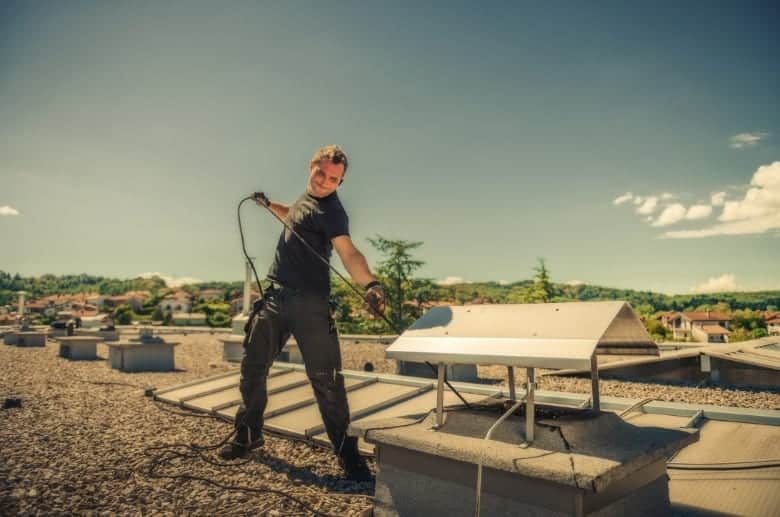
While cleaning your chimney yourself is possible, hiring a professional sweep can save you time and ensure that your chimney is properly cleaned and inspected. This is especially important if you are inexperienced.
Unlike you, a professional chimney sweep will have the tools and experience to thoroughly clean your chimney and identify potential issues. In addition, this keeps you from respiratory problems often caused by exposure to creosote, dirt, and dust exposure.
Conclusion
Cleaning your chimney is an important task that you should do regularly to prevent chimney fires and ensure that your chimney is functioning correctly. Additionally, it prevents back puffing of smoke which may lead to health problems such as inhaling challenges.
But the most critical aspect of cleaning a dirty chimney is being cautious. Always wear protective clothing, have someone help you, and never have a heating appliance running while cleaning. If you need professional help, you can contact us and schedule a cleaning and inspection.






